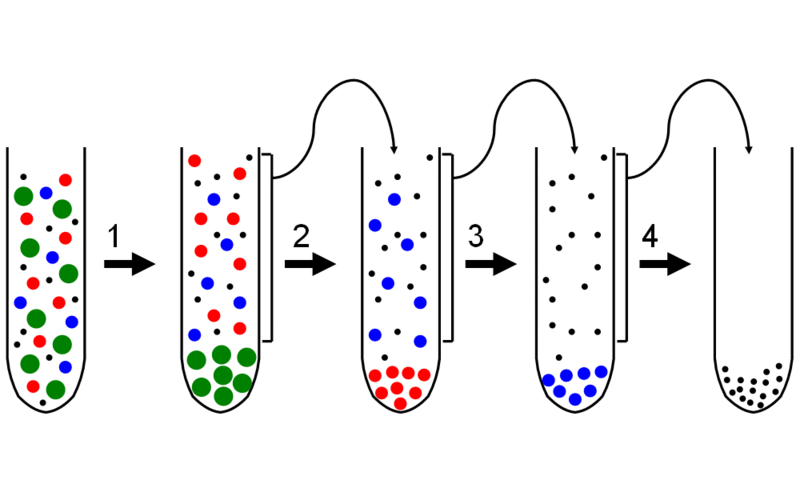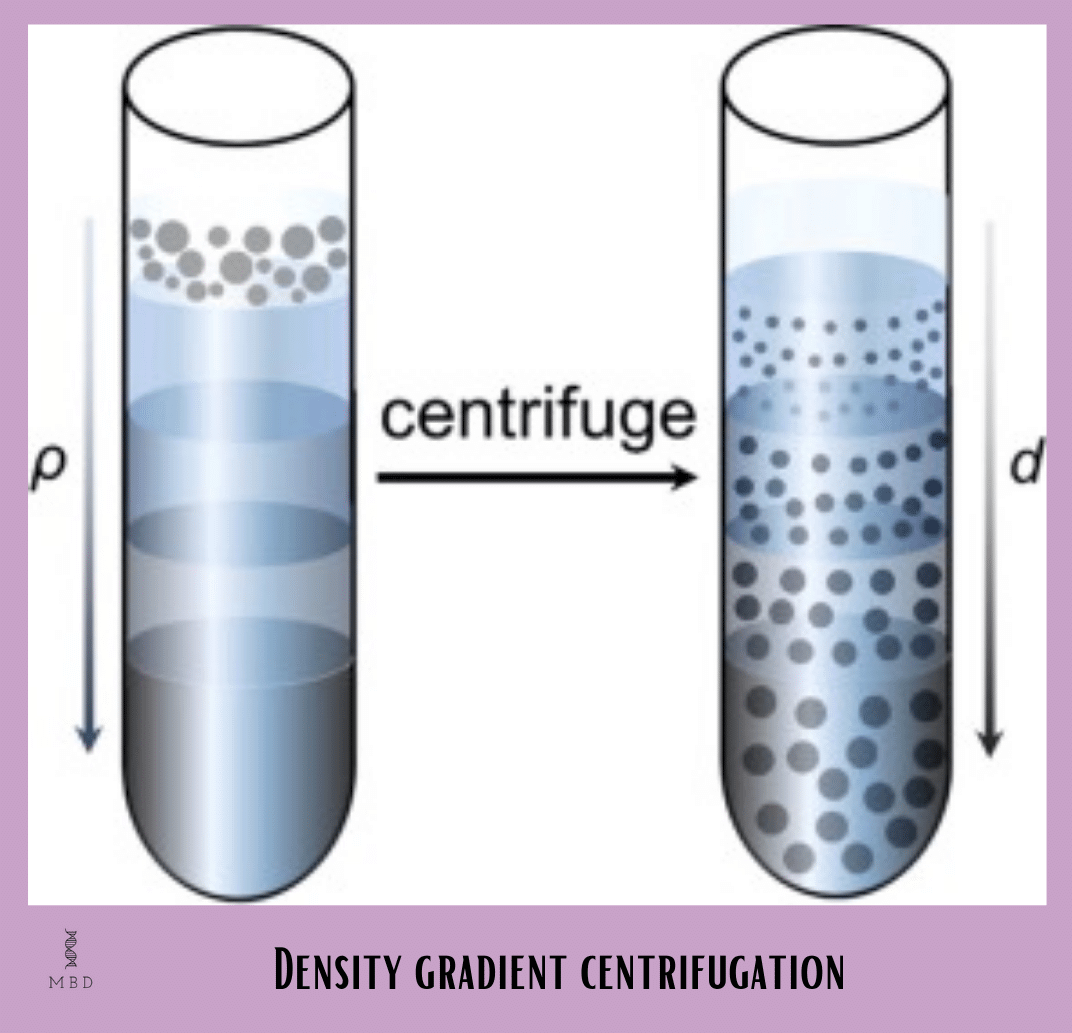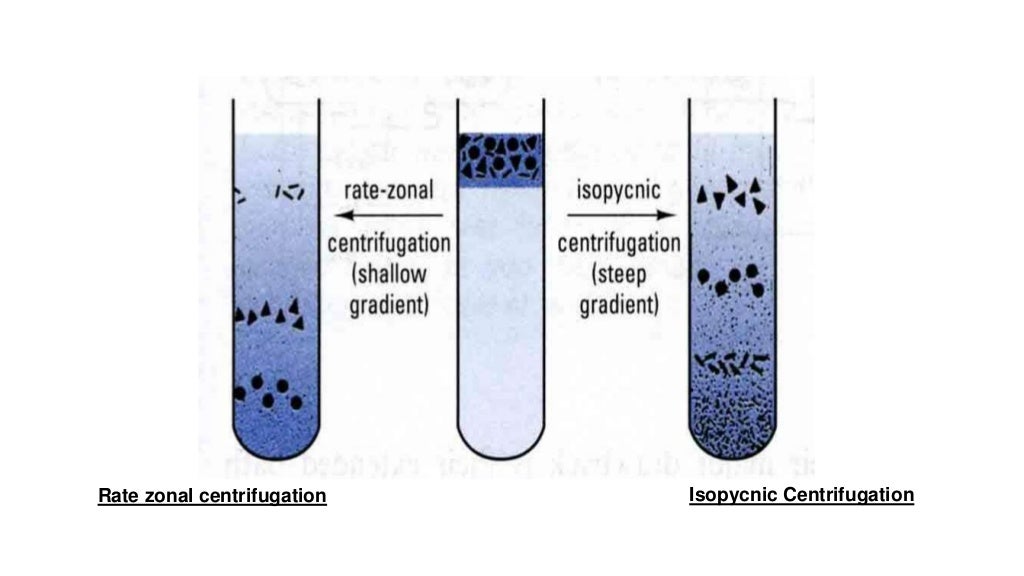Centrifugation
“Centrifugation is a technique to separate particles and components (biomolecules) suspended in a liquid medium”.
How does centrifugation work
Centrifugation works on the principle of sedimentation( formation of layers).
“The principle of the sedimentation technique is to separate particles suspended in the liquid under the influence of centrifugal force according to their density.”
Objectives :
- to separate cellular, sub-cellular, macro, and micronutrients
- to separate immiscible liquid
- to purify impurities suspended in a liquid

Working on centrifuge machine
centrifugation is based on the sedimentation, separation, and purification of the mixture as well as particles suspended in liquid by rotating centrifuge tubes at different speeds. These tubes are placed in the rotator in an alternate and opposite position to balance their weight and best results. Particles suspended in a liquid are pulled downward by gravitational force. In a solution particles whose mass of density is high sink and particles with lighter weight will float. The centrifugal force helps in the angular rotation of liquids.
Centrifugal Rotations
They are designed to generate rotation speed that can bring about the separation or sedimentation of particles.
- Fixed angle rotator
- Swinging / horizontal rotator
- Vertical rotator
Fixed angle rotator:
Hold the sample tube at 45° degrees particles strike the opposite sides of the tube and then settle down.
swinging/ horizontal rotator:
Hold the tube at 90º and tubes are suspended in the racks, rotator moves the tubes in the horizontal position under the influence of a centrifugal field.
Vertical rotator:
Tubes are held vertically during rotation. Path length becomes shorter and the particle has only a short distance to travel to the pellet and the fastest run time.
Centrifugation machine
A machine used in centrifugation is called the ‘Centrifuge machine’.
Types of centrifugation machine
Benchtop Centrifuge
This type of centrifuge machine is used only in the laboratory with a rotation per minute RPM 1000 to 5000.
Continuous flow Centrifuge
Continuous flow centrifugation is a laboratory time-saver technique. By this technique, only small samples can be centrifuged by centrifugal force. At 10,000 RPM we can separate the nucleus. In this process, we take samples in a bottle and link them to a container and this container is also linked to a rotator with the help of pipes. In the rotator supernatent layer and pallets are separated. Supernatent solutions are squeezed in a beaker. It operates at continuously flowing and takes continuous separation.

Gas Centrifuge
In this type, we separate gaseous samples and isotopes. They are separated according to their densities with the help of the sedimentation process.
Hematocrit Centrifuge
This centrifuge is used to separate red blood cells RBCs in the blood. A swinging rotator is used at 90º.
High-speed Centrifuge
This centrifuge is used in bio labs to separate the small organelles at a speed of 15,000 to 30,000 RPM.
Low-speed Centrifuge
This machine is used in clinics or diagnostic labs for cell lysis purposes at the speed of 4000 to 5000 RPM.
Ultra Centrifuge
It operates at a very high speed from 60,000 to 150,000 RPM to separate nucleic acid, proteins, carbohydrates, etc from the sample.
Refrigerator Centrifuge
It maintains temperature and environment for better rotation and provides cooling to prevent the denaturation of the sample. It works at 20 to 30ºC.
Vacuum Centrifuge
It helps in the separation process and drying the pallets of the sample.
large-scale centrifuge
This centrifuge machine is used in large-scale laboratories and industries to separate large amounts of samples.
Types of centrifugation
1. Differential Centrifugation
It is commonly used in biochemistry and molecular biology. This technique is used for the separation of sub-cellular components. This is also used to separate the cell membrane, low-resolution nucleus, and organelles for purification and extraction. In this process firstly cell lysis occurs then all organelles are separated. After rotation at 600g for 10 minutes we can separate the nucleus into the pallets form and then at further rotation mitochondria, ribosomes, and cytoplasm are separated at different speeds. Separation occurs based on their sizes.

2. Density gradient Centrifugation
Separation occurs based on their densities. It separates particles or analytes solution, molecules and is independent of time. Suppose we have a solution of different densities such as 10%, 20%, 30%, 80%, and 90%, and rotate it for some time when the machine is stopped this sample will be separated into different layers with 90% on the bottom then 80%,30%, 20%, and 10%will be on the top. It is used for homogenized solutions.
the formula of density that is used in this process is
d=m\v
The experimental technique of density gradient centrifugation

3. Rate-zonal Centrifugation
In this type of centrifugation, separation occurs based on size and shape. It is a time-dependent technique. The minimum density of the gradient never exceeds the density of the maximum dense particles. Dense particles remain at the bottom due to gravitational force and large particles on the top. At the same time, small molecules will be separated fast and less dense molecules remain on the upper layer of the sample.


Amazing work.JazakiAllah kharan kaseera.
Thank you